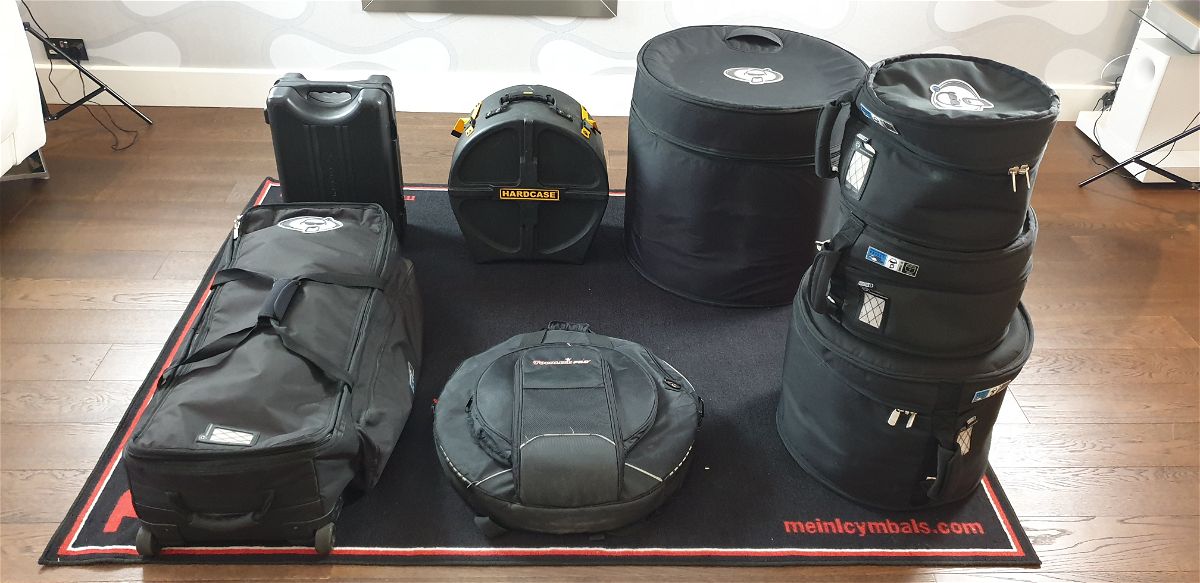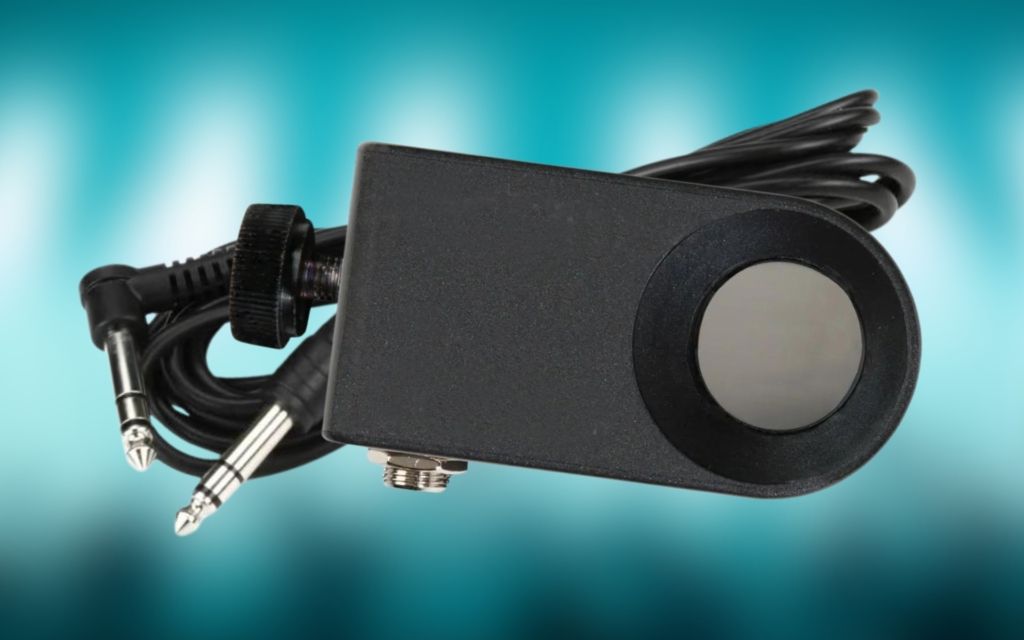If you need to pack down and store your drum set, you may be wondering the age-old question – is it OK to stack my drums? It’s a valid question, as drums are expensive, and you should do everything in your power to preserve them as much as possible.
To give a short answer, yes, it’s perfectly okay to stack your drums. You just shouldn’t leave them in places where they can get knocked over or bumped into, and you should stack them correctly in order of size.
Stacking drums saves a significant amount of space, and most drummers do it at some point in their playing career. It’s the best way of storing drums, so it’s good to know if doing this will damage the drums or not.
Contents
Can I Stack My Drums On Top of Each Other?
It is perfectly fine to stack your drums on top of one another. Drum shops, music studios, and professional drummers often stack drums on top of each other for long periods of time to save space.
The reality of stacked drums is that there is potential for them to get damaged, but they won’t be damaged from being in that position. They would only damage if they fall or they get knocked.
If you’re careful, you can easily stack your drums. There are certain ways of stacking your drums that will protect them. So, be sure to think about preserving the drums using these methods.
How to Stack Drums
When stacking your drums, you want to create a tower or a ‘Christmas tree’ with them by putting the largest drum at the bottom and the smallest one at the top.
Naturally, your bass drum will be resting on the ground. After that, make sure that you only stack your drum set shells on top of each other that are smaller than the drum that they’re resting on.
If you have two drums with the same diameter, you should put the one with the larger depth first so that it provides a stable base for the next drum.
Also, make sure to remove the legs from any floor tom that may be included in your drum stack. Those legs will get in the way, so it’s better to keep them in a hardware case.
Tips for Stacking Drums

Face Tom Resonant Heads Upward
If you face the batter heads up, they shouldn’t get damaged. They’re designed to take frequent beatings, so having drums rest on them won’t do much to their structural integrity.
However, if you’re really worried about your drumheads getting damaged, you should face the resonant sides of all your drums upward. This will give you more peace of mind, as the resonant sides arguably aren’t as important as the batter sides when it comes to playing.
You’ll need to face the batter side of the bass drum upward if the resonant side has a port hole, though. Reso heads with portholes won’t be able to hold any weight on top of them. If the reso head doesn’t have a port hole, then you can face it the same way as all the other drums.
You may also want to face the snare drum batter head upward. If you face the reso head upward, you’ll have a drum resting on the snare wires, and that could potentially damage them.
Loosen Lugs on Each Drum
The tighter your drumheads are, the more strain they’ll have on them. A quick tip to protect them a bit would be to loosen the lugs to a finger-tight level.
They need to be tight enough to hold weight on them but loose enough not to be strained by having a lot of weight on them.
This may seem like it could damage them, but drumheads are incredibly durable. Keeping them with looser tensions will allow you to keep the drums stacked for longer without damaging any of the heads.
It will also make the tuning process a bit quicker when you set the drums up again, considering the fact that stacked drums usually go out of tune after a while.
Clean Your Drums
When your drums are stacked and out of sight, they tend to gather a lot of dust. To keep your drums in pristine condition, you should unpack the stack every now and then and give the shells a good dust-off.
It’s also a good idea to wipe them down with a damp cloth. Keeping the dust away stops the shells from warping over time. It also stops the hardware from degrading.
When you take the drums down to give them a quick clean, you’ll be able to inspect them to see if any damage has occurred. So, cleaning the shells will become a quick checkup as well.
You should then stack them again using the same method and tips that I mentioned above.
Use Drum Cases

To keep your drums in the best possible shape, the best thing you can do is get a set of drum bags to keep them in.
While drum bags are excellent for carrying your kit around to different gigs, they’re also an amazing tool to keep your drums safe when you’re not using them.
With drum bags, you won’t have to worry about dust or corrosion. You also won’t have to worry about the drumheads having other drums resting heavily on them when the drums are stacked.
Hard cases are the best option for making a solid drum stack. Soft cases work, but the stack will feel a bit wobbly, which arguably isn’t as safe as stacked drums without cases. However, the cases will protect the drums if they fall.
Where to Place Your Stacked Drums
When looking to store a drum set safely, the best place to position a set of stacked drums is in the corner of a room.
Placing them into a corner will prevent anyone from being able to knock them over accidentally. If there’s room on either side of the drum stack, someone could walk past it and bump the drums.
If you can’t place the stacked drums in a corner, you should create some sort of barrier around the stack, whether that be with other drum hardware or selected furniture.
If you have a large set, it may be better to create two drum stacks instead of having one tall one. Again, your drums will be safest if they’re stacked inside drum cases.
Cymbals and Hardware
Unfortunately, cymbals and hardware can’t be stacked the same way that drum shells can. These need to go into their own protective bags and get placed somewhere safe so that they can’t be damaged.
While hardware can be placed somewhere without a case, I highly recommend using get a cymbal bag to store your cymbals. Out of all the drum gear, cymbals can get damaged the easiest.
A good place to put a cymbal bag would be behind a drum stack. Just make sure that the cymbal bag is leaning on the drum stack and not the other way around.
For hardware, a hardware case can easily be placed anywhere near where you have your drums stacked.
Wrap Up
In conclusion, stacking your drums is perfectly okay. You just need to do it in certain ways to ensure that your expensive drums get the best care possible.
If you just stack the drums on top of each other without putting too much thought into it, the chances are high that they could get damaged, especially if you leave them like that for a long time.
If you face all the reso heads upward, loosen the lugs a bit, and ensure that you routinely give the drums a light clean, they’ll be perfectly fine.
The best thing to do when stacking drums is to put them in drum cases and then stack them. You won’t need to worry about them at all if you do that.









